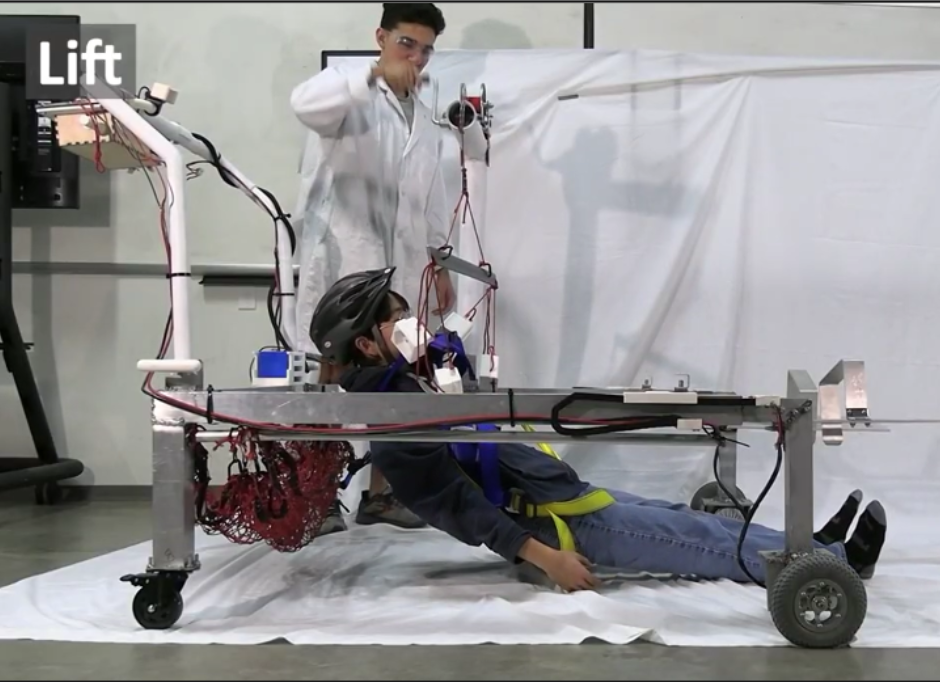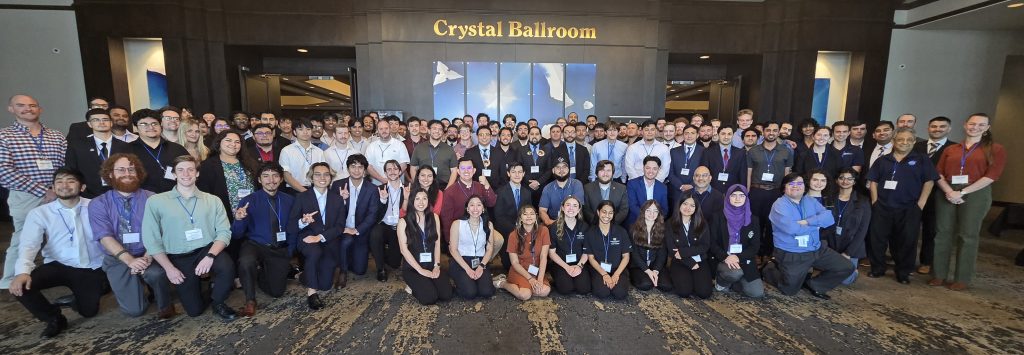
What is Design Challenge?
The TSGC Design Challenge is a unique academic experience offering undergraduate students an opportunity to propose, design, and fabricate a solution toward solving research objectives of importance to NASA and its mission.
- Sponsored by NASA and administered by the Texas Space Grant Consortium since 2002, Design Challenge topics are submitted by researchers working with NASA and its contractor community on current projects of interest within NASA’s vision for space exploration.
- Students form and work as a team to meet their design objective over the course of one or two semesters while interacting with their faculty advisor and a NASA workplace mentor.
- The overall experience provides students with the opportunity to engage in scientific research, hands-on design, communication skills, educational outreach, and space-based workforce initiatives.
The Design Challenge program is structured to accommodate a variety of design sequences taught in curriculums throughout the State of Texas in institutions of higher learning.
- Workforce development initiatives include funding for project construction and travel that may include a mentor site visit, project-associated field experiences, and the final presentation in Houston.
- The application process is competitive. Typically, up to two teams per year per TSGC academic member institution may be fully funded to participate based upon the availability of projects and funding.
- Design Challenge teams progress through a series of milestones each semester, culminating in a Showcase presentation event held in Houston near NASA Johnson Space Center.
- Competitive scholarships (U.S. citizens eligible only) are awarded to top teams each semester as rated from NASA, industry, educational, and peer feedback.
Please see Design Challenge for the current semester’s application process, timeline, and deadlines.

Goals and Objectives
The TSGC Design Challenge goals are to:
- Engage students in research, invention, and design
- Enable faculty and further institutions’ research and teaching opportunities by promoting design projects as a complement to required coursework
- Encourage students to study and seek careers in space-related fields, and join the space career workforce
Design Challenge objectives include:
- Providing students with an opportunity to solve real-world problems of interest to NASA and its space-research-affiliated contractor community.
- Invigorating student interest in academic pursuits that solidify interest in space-related careers, bridging the school-to-work transition.
- Encouraging institutions of higher learning to implement, improve, or expand their design project curriculum.
- Promoting research via collaborations outside the team’s immediate academic community and securing bonds between academia and industry via student/mentor relationships.
History of the Design Challenge
The genesis of what would eventually become the TSGC Design Challenge began as the nationwide NASA-USRA Advanced Design Program in the 1980s with primary participation from The University of Texas at Austin and Texas A&M University.
After that program ended, Dr. Wallace Fowler and others at TSGC continued the program model and ran several versions. Beginning in 2002 Debbie Mullins focused the program on pairing Texas institutions from across the state with NASA JSC projects.
Management of the Design Challenge was turned over to Dr. Tim Urban and Talia Jurgens in 2013 who have continued to expand and evolve the program. In 2020 the program was recognized by the Texas Higher Education Coordinating Board for “Excellence and Innovation in Higher Education”.
Program Impact 2022-2024
Nearly 600 teams from 25 different schools, and nearly 3000 students impacted.

The TSGC Design Challenge has continued to grow with a vision to include a larger number and variety of Texas schools and students each semester. Topics have expanded throughout the wider NASA Johnson Space Center community as team mentors, Showcase judges, and new partnerships with NASA competition opportunities. The program has become a widely-acclaimed cooperative endeavour by Texas students, faculty, and NASA.
